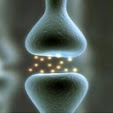What to Expect With a Biopsy
What Is a Biopsy?
It's a test to check for signs of disease. Your doctor takes a small sample of tissue or cells from an area of your body where you may have cancer, an infection, or another health issue. The sample is sent to a lab, where technicians look for cells that could be harmful to your health.
How to Prepare
Your doctor will tell you if there's anything you need to do - or not do - before your biopsy. For example, you might need to stop taking drugs like blood thinners or aspirin, or not eat or drink for a number of hours beforehand. If you're going to get medicine to make you sleepy during the procedure, ask someone to go with you so they can drive you home.
What to Expect Afterward
The affected area may be sore or uncomfortable for a few days, but your doctor can give you pain medicine if you need it. Take it easy the day after your biopsy, and follow your doctor's instructions on how long to wear a bandage or take care of the site in some other way.
Getting Answers
With some types of biopsies, your doctor can test the sample right away for quick results. Other results are ready in a day or two, but some take a few days longer. The lab will send them to your doctor, who will talk with you about them.
Type: Needle Biopsy
With this kind of biopsy, your doctor uses a needle to take a bit of tissue from a possible problem area. Doctors typically recommend this to test tissues from breasts, lymph nodes, thyroid glands, or testicles.
How a Needle Biopsy Is Done
Your doctor will do this procedure in a clinic or office, and it usually takes less than an hour. She'll clean and numb the area, then she may use ultrasound or another type of imaging scan to help guide the needle to the spot to draw out tissue. Afterward, she'll cover the area where the needle went in with a bandage. It may be a bit sore or bruised for a little while.
Type: Skin Biopsy
This procedure tests moles, growths, rashes, or lesions on your skin. It's often used to check for skin cancers like melanoma. If the area is just on the surface of your skin, your doctor will shave off a tiny sample with a razor. Deeper growths may need a procedure called a punch biopsy. With that, your doctor will use a round tool to remove a sample for testing.
How a Skin Biopsy Is Done
The area will be cleaned and numbed with medicine. You may feel a little pinch or burning from that, but you won't feel anything with the biopsy itself. Afterward, the site may be red, but it shouldn't hurt. You can rub ointment on the area to keep the skin moist and prevent a scar or infection. It should heal within 3 weeks.
Type: Excisional or Incisional Biopsy
These procedures are mostly used to test areas that involve skin, breasts, lymph nodes, or muscles. An excisional biopsy takes a whole polyp or a large area of skin. An incisional biopsy takes a deep but smaller area of skin. For example, if your doctor thinks you have melanoma, he can take out a whole skin tumor with an excisional biopsy, while an incisional biopsy would take out only part of a tumor.
How Excisional and Incisional Biopsies Are Done
Depending on where the area is and its size, your doctor will either numb it or give you medicine to make you sleepy. Then he'll use a small, sharp knife to take a sample of tissue. You may need stitches afterward. After the medicine wears off, you may feel a little pain or notice a small amount of bleeding. If it hurts badly or bleeds a lot, call your doctor right away.
Type: Endoscopic Biopsy
With this, your doctor uses a long, thin tube that has a light and camera at the end called an endoscope. It's recommended when he needs to get to an area deep inside your body. For example, it can take samples of tissue from your colon or bladder or a lung.
How an Endoscopic Biopsy Is Done
The procedure might be done at your doctor's office or as outpatient surgery in a hospital. Your doctor will give you medicine to make you sleepy, then he'll put the endoscope through your mouth, rectum, or urinary tract or through a small cut in your skin. The camera will guide him to the tissue to be tested. It's usually a very safe procedure, but there's a small risk of tissue tears, infection, or bleeding.
Type: Bone Marrow Biopsy
Blood diseases and cancers like lymphoma or myeloma can leave signs in your bone marrow. Your doctor can use a long needle to take a small sample of bone marrow or bone to be looked at under a microscope. She'll put some medicine on the area to numb it, but you may feel a little uncomfortable during the procedure.
Type: Surgical Biopsy
If your doctor needs to take out a large area of tissue, tumor, lump, or lymph node to be tested, it'll be done in a hospital, and you'll get medicine to make you sleep through the procedure. In some cases, your doctor may make only a tiny cut, then use a tube with a camera on the end to be guided to the right area. That type of surgical biopsy is called a laparoscopic biopsy.
Subscribe to Our Posts via Email



























No comments:
Post a Comment